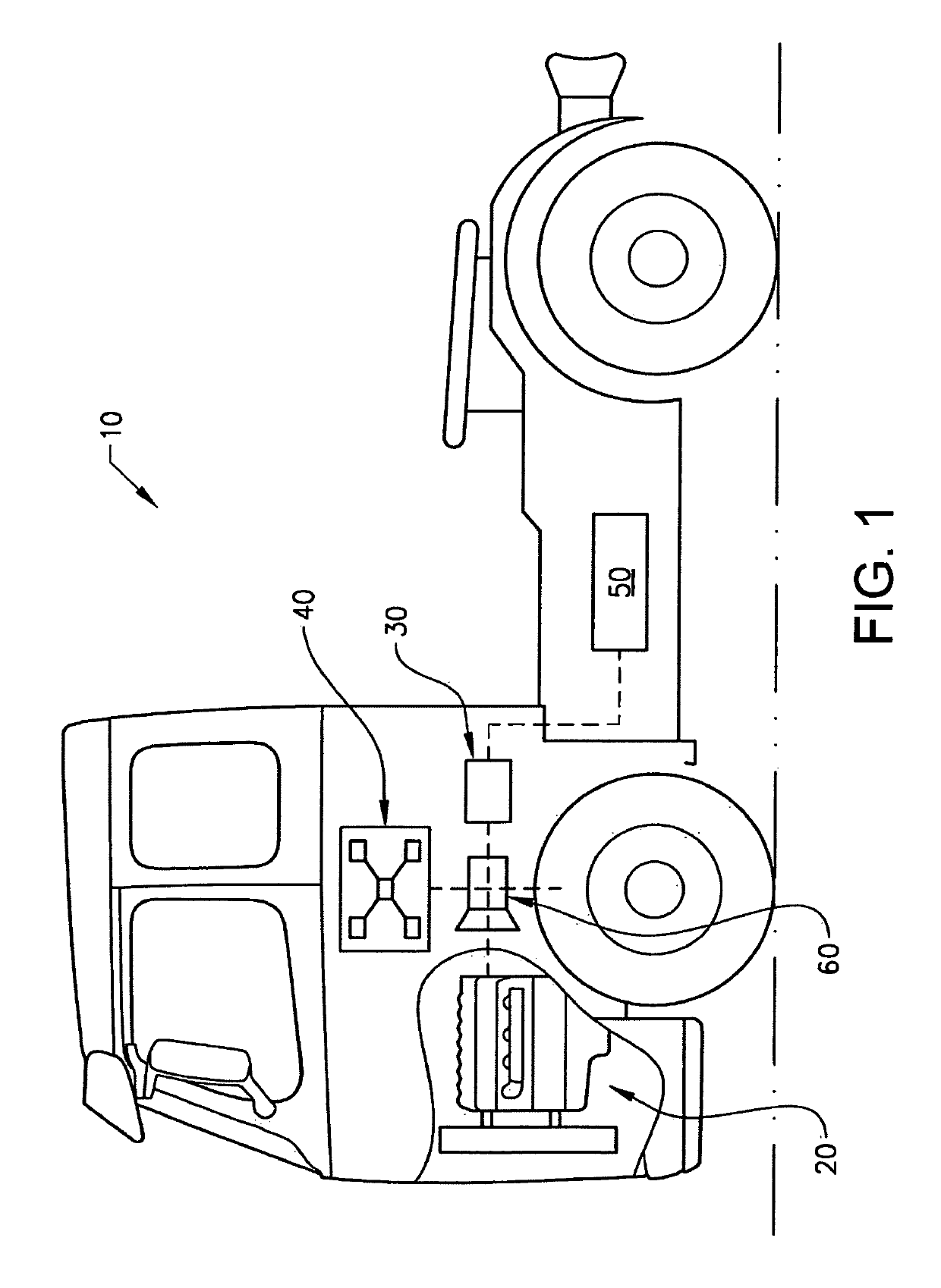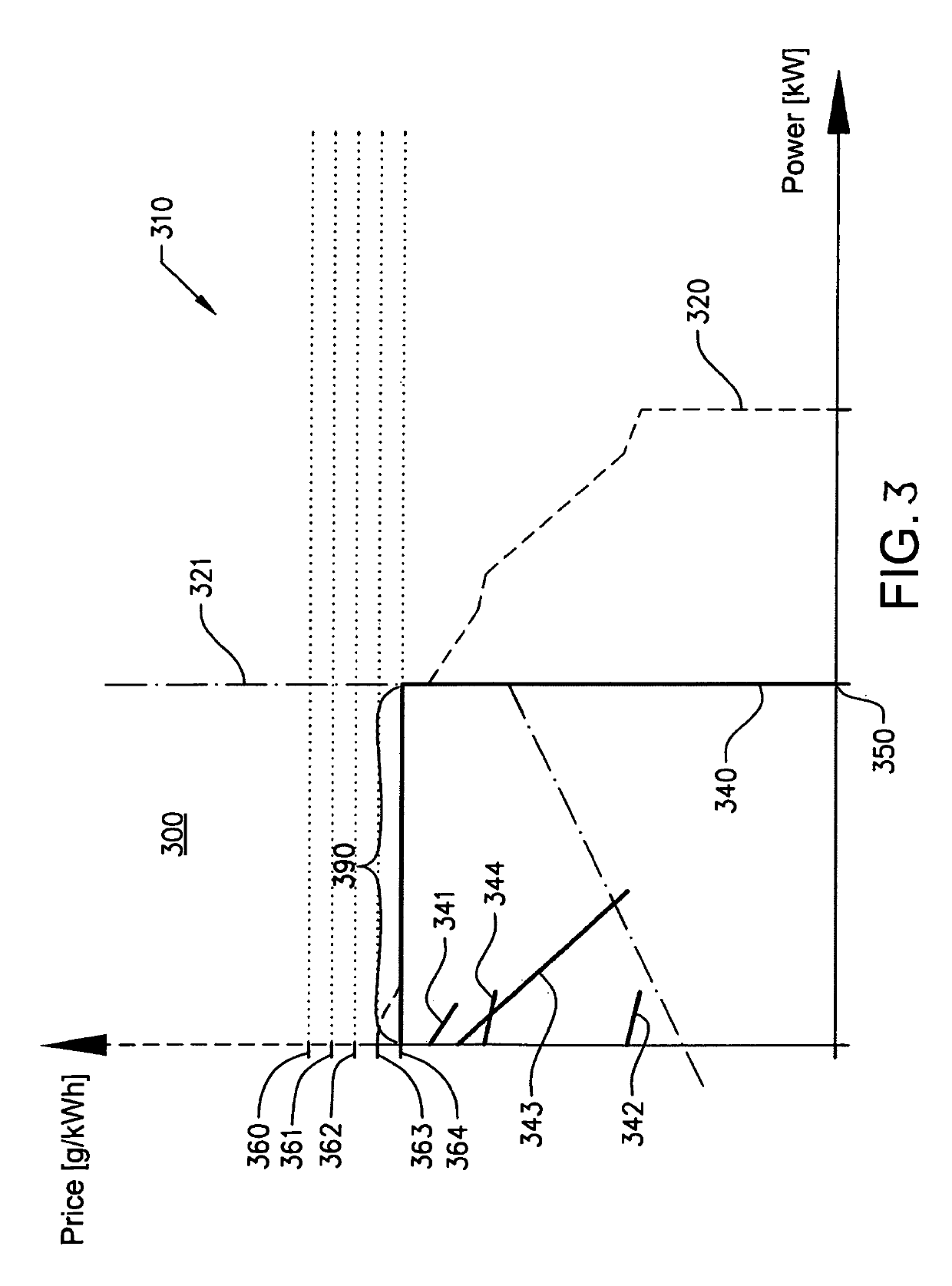Method performed by a control unit for controlling energy flows of a vehicle
a technology of energy flow and control unit, which is applied in the direction of engine-driven generators, machines/engines, transportation and packaging, etc., can solve the problems of increasing the difficulty of making large improvements in order to improve fuel efficiency, auxiliary systems such as air conditioning systems, power steering etc., consume a large portion, and the tuning process of the control method is time-consuming and complex
- Summary
- Abstract
- Description
- Claims
- Application Information
AI Technical Summary
Benefits of technology
Problems solved by technology
Method used
Image
Examples
Embodiment Construction
[0068]FIG. 1 discloses a schematic embodiment of a heavy duty hybrid vehicle 10 comprising an internal combustion engine (ICE) 20, a converter in form of an electric machine 30, an energy buffer 50 in form of an electrical battery, a drivetrain 60 and a control unit 40 for controlling energy flows of said heavy duty hybrid vehicle 10. The electrical battery energy buffer 50 is connected to the ICE 20 via the electric machine converter 30 and the drivetrain 60. The control unit 40 is provided such that the ICE 20, the electric machine converter 30, the drivetrain 60 and the electrical battery energy buffer 50 can be controlled by the control unit 60. The method of the present in Mention is performed by the control unit 40 and is suitable to apply for the vehicle 10. In the embodiment of the present invention disclosed in FIG. 1 the control unit 40 is schematically depicted as one physical component. However, as is obvious for a person skilled in the art, the control unit 40 may also ...
PUM
 Login to View More
Login to View More Abstract
Description
Claims
Application Information
 Login to View More
Login to View More - R&D
- Intellectual Property
- Life Sciences
- Materials
- Tech Scout
- Unparalleled Data Quality
- Higher Quality Content
- 60% Fewer Hallucinations
Browse by: Latest US Patents, China's latest patents, Technical Efficacy Thesaurus, Application Domain, Technology Topic, Popular Technical Reports.
© 2025 PatSnap. All rights reserved.Legal|Privacy policy|Modern Slavery Act Transparency Statement|Sitemap|About US| Contact US: help@patsnap.com



